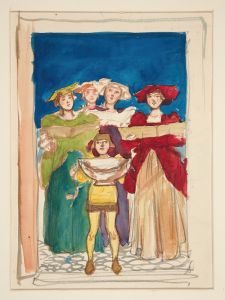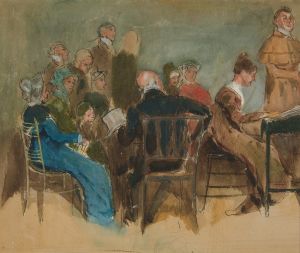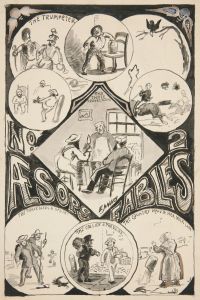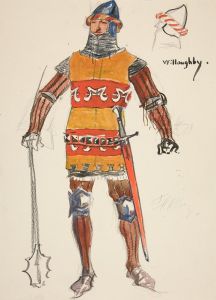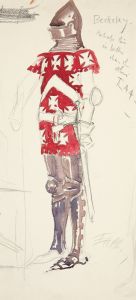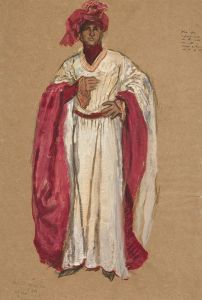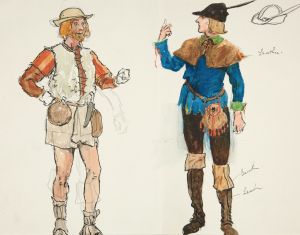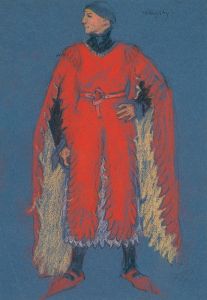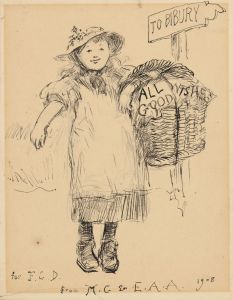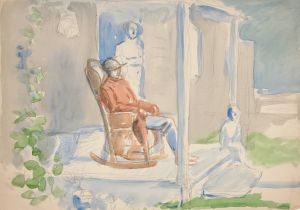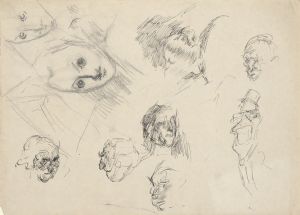
A Lady, costume sketch for Henry Irving’s Planned Production of King Richard II
A hand-painted replica of Edwin Austin Abbey’s masterpiece A Lady, costume sketch for Henry Irving’s Planned Production of King Richard II, meticulously crafted by professional artists to capture the true essence of the original. Each piece is created with museum-quality canvas and rare mineral pigments, carefully painted by experienced artists with delicate brushstrokes and rich, layered colors to perfectly recreate the texture of the original artwork. Unlike machine-printed reproductions, this hand-painted version brings the painting to life, infused with the artist’s emotions and skill in every stroke. Whether for personal collection or home decoration, it instantly elevates the artistic atmosphere of any space.
"A Lady, costume sketch for Henry Irving’s Planned Production of King Richard II" is a notable work by the American artist Edwin Austin Abbey. Abbey, born in 1852, was renowned for his illustrations and paintings, particularly those depicting scenes from Shakespearean plays and other literary works. This specific piece is a costume sketch created for the famous British actor-manager Sir Henry Irving's intended production of William Shakespeare's historical play "King Richard II."
Edwin Austin Abbey's career was marked by his detailed and historically accurate illustrations, which gained him significant acclaim. He moved to England in 1878, where he became deeply involved in the British art scene and developed a close association with prominent figures in the theater world, including Henry Irving. Irving was one of the most celebrated actors of the Victorian era, known for his innovative and elaborate stage productions.
The sketch "A Lady" is part of a series of costume designs Abbey created for Irving's planned staging of "King Richard II." Although the production never came to fruition, Abbey's sketches remain valuable artifacts, showcasing his meticulous approach to costume design and his ability to capture the essence of Shakespearean characters through his art.
In this particular sketch, Abbey depicts a female figure dressed in period-appropriate attire, reflecting the fashion of the late 14th century, the era in which "King Richard II" is set. The costume includes intricate details such as the fabric, accessories, and overall design, highlighting Abbey's dedication to historical accuracy and his skill in rendering textures and patterns.
Abbey's work on these costume sketches demonstrates his deep understanding of the historical context and his commitment to bringing authenticity to theatrical productions. His collaboration with Henry Irving, although ultimately unrealized in this instance, exemplifies the intersection of visual art and theater during the late 19th century.
The sketches, including "A Lady," are preserved as part of Abbey's artistic legacy and continue to be studied for their artistic and historical significance. They offer insight into the collaborative process between artists and theater practitioners of the time and serve as a testament to Abbey's talent and his contributions to the visual representation of Shakespearean drama.
Edwin Austin Abbey's influence extended beyond his costume designs; he was also known for his murals, book illustrations, and other paintings. His work remains an important part of the art historical canon, particularly in the context of Shakespearean art and the visual culture of the Victorian era.
In summary, "A Lady, costume sketch for Henry Irving’s Planned Production of King Richard II" by Edwin Austin Abbey is a significant piece that reflects the artist's expertise in historical costume design and his collaboration with one of the most prominent theatrical figures of his time. Abbey's attention to detail and commitment to authenticity are evident in this work, making it a valuable contribution to both art and theater history.





